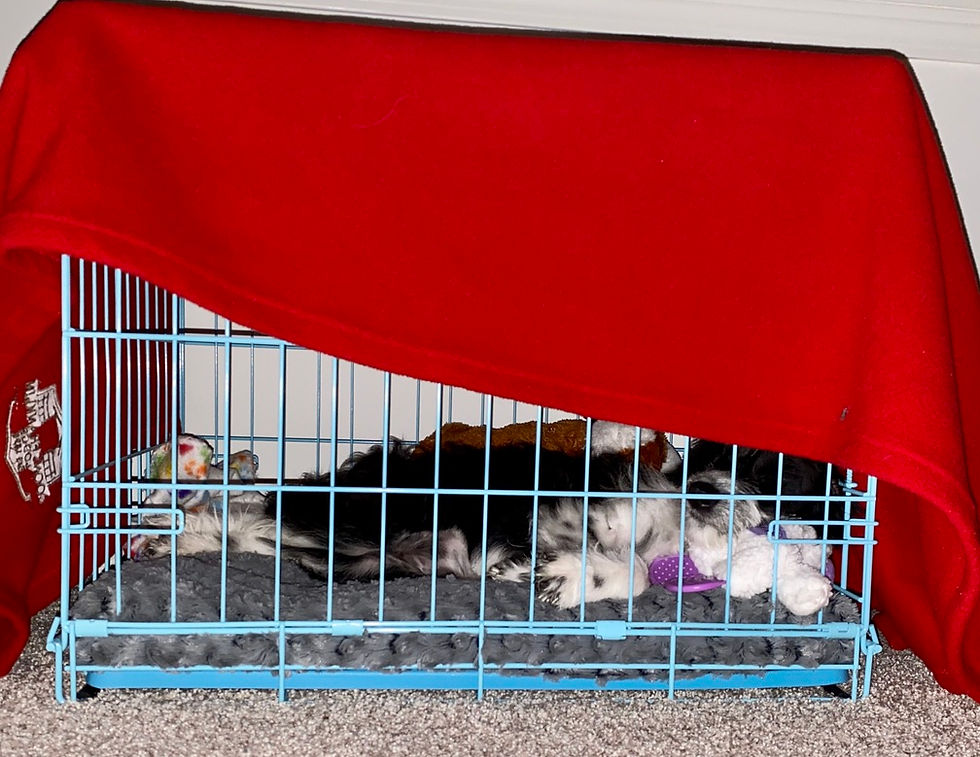The Pros of Crate Training
- Kaitlin Creadon

- Oct 24, 2021
- 2 min read
On the ranch, all our dogs are used to their crates. They're comfortable in these safe spaces. For dogs of all ages, crates can be useful for transportation, safe havens, training tools, and lifesavers.
Say you drop a glass and it shatters into a hundred pieces all over your kitchen floor. Your young pup doesn't know the commands "stay" and "leave it" yet. The crate will become the safe space as you clean up the broken glass.
Or imagine you have to leave your house for a couple of hours and your puppy is still in the teething stage. You can't yet let them stay loose amongst all the potential chew hazards. Crate = safe.
Or if you have a dinner party at your house and your dog feels it's too loud, too much commotion: crate = safe. You get the point!
Even if you plan on letting your puppy sleep with you at night (but we do believe crating is helpful during the first few months at the very least), your dog will definitely be crated when they're at the groomer and at the vet. They need to view this space as soothing, not as a stressor.
Not sure where to start with crate training? Zak George can walk you through the steps of introducing the crate!
You'll see in the pictures below, young Maple and young Bella had a blanket covering the sides. She likes a dark space, just like how humans could have blackout curtains. By putting some sort of blanket over the crate, it gives it more of a "dark den" feel. Every pup is different though!

There are many different types of crates out there, and it can be quite overwhelming. We recommend the Midwest brand. It comes in different sizes and allows for fun colors and has either single or double door options. If you find your dog is a heavy chewer, a different crate might be better suited for your needs. This page from TopDogTips could help you decide what is best for your home.







Comments